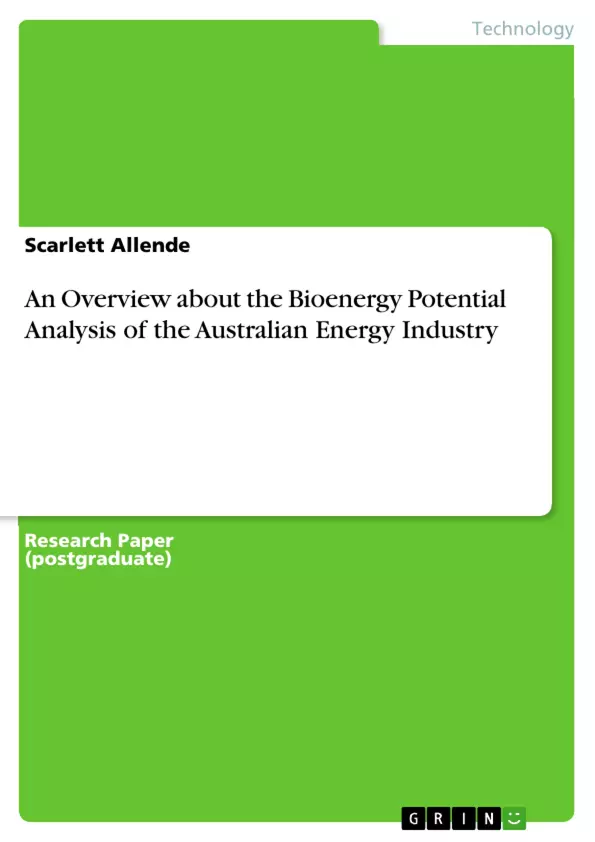The present report involves the study the Australian bioenergy potential. According to the natural sources of Australia, has agriculture experimented and optimal weather condition to the bioenergy technologies development. The bioenergy generation represents 9.7% of the total production of renewable energies in Australia. In a similar way, the primary solid biofuel had the prevalence of the energy supplied from bioenergy with around 89% of production.
The region with the highest bioenergy generation in Australia was Queensland and New South Wales, whose main biomass is bagasse. Moreover, the principal type of feedstocks used on current projects was the municipal and industrial waste with 64% of predominance. On the other hand, waste management has a significant role in the current amount of urban waste due to improves local sustainability. At the same time, its influence on the expansion of bioenergy technologies allows improves processes and efficiency associated with the technology. What in turn increase the bioenergy potential.
Inhaltsverzeichnis (Table of Contents)
- Introduction
- Technologies description
- Energy generation and consumption
- Potential of resources
- Advantages and challenges to solve
- Conclusion
- References
Zielsetzung und Themenschwerpunkte (Objectives and Key Themes)
This report analyzes the bioenergy potential of the Australian energy industry, exploring its diverse natural resources and classifying available biomass for bioenergy generation. The study aims to understand the biomass perspective in different zones, identifying the sources associated with each state, analyze the energy demand in the industry sector, and evaluate market projections.
- Biomass potential and classification
- Bioenergy technologies and conversion processes
- Energy generation and consumption in Australia
- Economic, environmental, and social aspects of bioenergy
- The role of waste management in bioenergy production
Zusammenfassung der Kapitel (Chapter Summaries)
- Introduction: This chapter provides an overview of the report's objectives and scope, focusing on the analysis of Australia's bioenergy potential. It highlights the importance of understanding biomass resources, energy demand, and market projections.
- Technologies description: This chapter explores the different stages of the bioenergy process, including feedstock options, conversion technologies, and the final bioenergy products and applications. It discusses the four main conversion processes: combustion, gasification, pyrolysis, and anaerobic digestion.
- Energy generation and consumption: This chapter analyzes the contribution of renewable energies, particularly bioenergy, to Australia's electricity generation. It also provides insights into the distribution of primary energy supply from bioenergy, focusing on the role of solid biofuel and biogas.
Schlüsselwörter (Keywords)
The primary keywords and focus topics of this report include bioenergy, biomass, feedstock, waste management, and sustainability. The report explores the potential of bioenergy as a renewable energy source in Australia, emphasizing the importance of efficient waste management and its impact on the expansion of bioenergy technologies.
- Arbeit zitieren
- Scarlett Allende (Autor:in), 2019, An Overview about the Bioenergy Potential Analysis of the Australian Energy Industry, München, GRIN Verlag, https://www.hausarbeiten.de/document/465943


